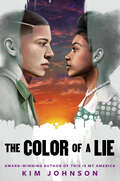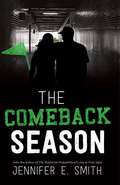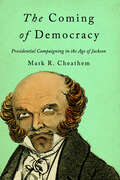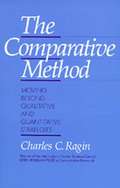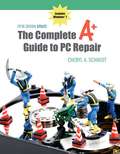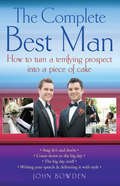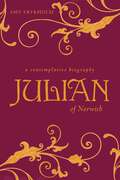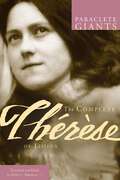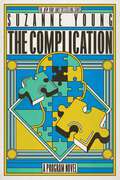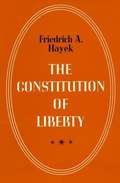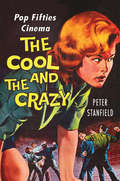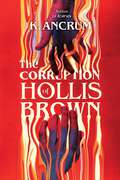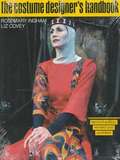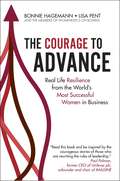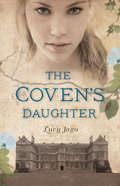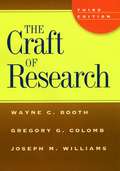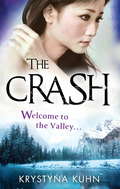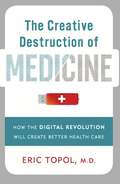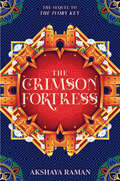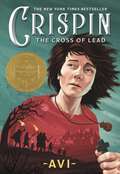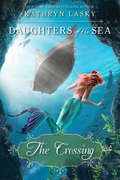- Table View
- List View
The Color of a Lie
by Kim JohnsonIn 1955, a Black family passes for white and moves to a &“Whites Only&” town in the suburbs. Caught between two worlds, a teen boy puts his family at risk as he uncovers racist secrets about his suburb. A new social justice thriller from the acclaimed author of This Is My America!Calvin knows how to pass for white. He's done it plenty of times before. For his friends in Chicago, when they wanted food but weren't allowed in a restaurant. For work, when he and his dad would travel for the Green Book.This is different.After a tragedy in Chicago forces the family to flee, they resettle in an idyllic all-white suburban town in search of a better life. Calvin's father wants everyone to embrace their new white lifestyles, but it's easier said than done. Hiding your true self is exhausting -- which leads Calvin across town where he can make friends who know all of him...and spend more time with his new crush, Lily. But when Calvin starts unraveling dark secrets about the white town and its inhabitants, passing starts to feel even more suffocating--and dangerous--than he could have imagined. Expertly weaving together real historical events with important reflections on being Black in America, acclaimed author Kim Johnson powerfully connects readers to the experience of being forced to live a life-threatening lie or embrace an equally deadly truth.
The Comeback Season
by Jennifer E. SmithBaseball brings them together—but will his secret keep them apart? Find out in this heartbreakingly beautiful novel from Jennifer E. Smith, author of The Statistical Probability of Love at First Sight.The last place Ryan Walsh should be this afternoon is on a train heading to Wrigley Field. She should be in class, enduring yet another miserable day of her first year of high school. But for once, Ryan isn’t thinking about what she should be doing. She’s not worried about her lack of friends, or her suffering math grade, or how it’s been five whole years since the last time she was really and truly happy. Because she’s finally returning to the place that her father loved, where the two of them spent so many afternoons cheering on their team. And on this—the fifth anniversary of his death—it feels like there’s nowhere else in the world she should be. Ryan is once again filled with hope as she makes her way to the game. Good luck is often hard to come by at a place like Wrigley Field, but it’s on this day that she meets Nick, the new kid from her school, who seems to love the Cubs nearly as much as she does. But Nick carries with him a secret that makes Ryan wonder if anyone can ever really escape their past, or believe in the promise of those reassuring words: “Wait till next year.” Is it too much for Ryan to hope that this year, this season, might be her comeback season?
The Coming of Democracy: Presidential Campaigning in the Age of Jackson
by Mark R. CheathemA look at the evolution of presidential campaigning from 1824 to 1840. If you think politics are uncivil now...Winner of the Phi Alpha Theta History Honor Society Best Subsequent Book Award by the Phi Alpha Theta History Honor SocietyAfter the "corrupt bargain" that awarded John Quincy Adams the presidency in 1825, American politics underwent a fundamental shift from deference to participation. This changing tide eventually propelled Andrew Jackson into the White House—twice. But the presidential race that best demonstrated the extent of the changes was that of Martin Van Buren and war hero William Henry Harrison in 1840. Harrison’s campaign was famously marked by sloganeering and spirited rallies. In The Coming of Democracy, Mark R. Cheathem examines the evolution of presidential campaigning from 1824 to 1840. Addressing the roots of early republic cultural politics—from campaign biographies to songs, political cartoons, and public correspondence between candidates and voters—Cheathem asks the reader to consider why such informal political expressions increased so dramatically during the Jacksonian period. What sounded and looked like mere entertainment, he argues, held important political meaning. The extraordinary voter participation rate—over 80 percent—in the 1840 presidential election indicated that both substantive issues and cultural politics drew Americans into the presidential selection process.Drawing on period newspapers, diaries, memoirs, and public and private correspondence, The Coming of Democracy is the first book-length treatment to reveal how presidents and presidential candidates used both old and new forms of cultural politics to woo voters and win elections in the Jacksonian era. This book will appeal to anyone interested in US politics, the Jacksonian/antebellum era, or the presidency.
The Comparative Method: Moving Beyond Qualitative and Quantitative Strategies
by Charles C. RaginProfessor Ragin proposes a synthetic new strategy, based on an application of Boolean algebra, that will combine the strengths of both qualitative and quantitative sociology. Elegantly accessible and germane to the work of all the social sciences, this book will garner interest, debate, and praise from many quarters.
The Complete A+ Guide To PC Repair Fifth Edition Update (5th Edition)
by Cheryl SchmidtCheryl Schmidt's The Complete A+ Guide to PC Repair, Fifth Edition Update presents the fundamentals of computer desktop and laptop installation, configuration, maintenance, and networking through simple, step-by-step instruction based on CompTIA A+®2011 Edition objectives. With a focused emphasis on security and customer service skills, this comprehensive book on computer repair introduces the most important tools students need to become professional, customer-friendly technicians using today's technology. The A+ Certification Exam criteria are being updated, effective January 2011, to include Windows 7. The Fifth Edition Update now includes Windows 7 material.
The Complete Best Man: How To Turn A Terrifying Prospect Into A Piece Of Cake
by John BowdenI know exactly what you are thinking. It seemed such a good idea at the time, but now you are beginning to realise there's going to be more to it than just turning up on time and handing over the ring. Am I right, or am I right? Fear not. Whether the happy couple has a traditional white wedding vision or a modernist view of their big day, this handbook will show you how to become their perfect best man...a best man who knows how to combine the best of the old with the best of the new. The groom will be glad he chose you. So pour yourself a cold one, sit back and get ready to learn how to turn a stressful honour into a piece of (wedding) cake.
The Complete Julian of Norwich (Paraclete Giants)
by John JulianThe most engaging and complete collection available of this beloved 14th century English mysticThe Revelations of Julian of Norwich is the first book written in English by a woman – in this case, by a 14th century recluse who recounts the poignant, subtle, and radical insights granted to her in sixteen visions of the crucified Christ as she lay on what was believed to be her deathbed. Julian's miraculous recovery from that illness then led to twenty more years of reflection and contemplation on those revelations and finally to her writing a detailed account of her mystical experience. Her work – in the same Middle English as her contemporary Geoffrey Chaucer – is dense, deeply intuitive, and theologically complex. The Complete Julian is the first book to offer a modern translation of all of Julian's writings (including her complete Revelations), a complete analysis of her work, as well as original historical, religious, and personal background material that helps the reader comprehend the depth and profundity of her life and work. "[Julian's Revelations] may well be the most important work of Christian reflection in the English language." — Rowan Williams, Archbishop of Canterbury
The Complete Therese of Lisieux (Paraclete Giants)
by Robert J. Edmonson Therese of LisieuxThe most complete and engaging one-volume introduction to the "Little Flower" Following a thorough introduction to the saint's life, The Complete Therese presents her classic, The Story of a Soul, in complete and unabridged form. Then, unique to this edition is a portion of the original edition rarely seen, describing the saint's final days as seen through the eyes of the Sisters of the Lisieux Carmel; plus a poignant collection of over seventy firsthand anecdotes about ThÉrÈse recounted by the Sisters following her death. Also included a comprehensive selection of prayers, letters, and poems written by Therese, and in both French and English, the poem that inspired her to call herself the "Little Flower." Further appendices give important dates for her life, taking the reader up to 1997, one hundred years after her death, when Pope John Paul II declared her to be a Doctor of the Church. Beautiful engravings and photographs throughout the book give the reader a view of the Little Flower's childhood home and family, her growing-up years, life at Carmel, her death, and the original gravesite. Millions of hearts have been touched by St. ThÉrÈse of Lisieux's desire, not to be mighty and great, but to be a humble, little flower that would gladden God's eyes as he glances down at his feet. Now, yours will be, too.
The Complication: The Program; The Treatment; The Remedy; The Epidemic; The Adjustment; The Complication (Program #6)
by Suzanne YoungTatum and Weston seek revenge against The Program in this heart-pounding final installment in Suzanne Young&’s New York Times bestselling Program series—now with a reimagined look.Every cure has a cost. Tatum Masterson learned this after years of being monitored by The Program. She witnessed it when her boyfriend, Weston, came back changed, erased. The Adjustment came into Tatum&’s life just when she thought she needed it most, a promise for Wes to get back his forgotten memories. But when the procedure went wrong, a revelation shattered everything Tatum thought she knew. Now with no one left to trust, Tatum must find out what really happened last summer. With the help of the boyfriend she lost, Tatum digs into the past and future of The Program and its handlers. Will the two teens be able to bring about the reckoning their tormentors deserve?
The Confluence of Public and Private International Law
by Alex MillsA sharp distinction is usually drawn between public international law, concerned with the rights and obligations of states with respect to other states and individuals, and private international law, concerned with issues of jurisdiction, applicable law and the recognition and enforcement of foreign judgments in international private law disputes before national courts. Through the adoption of an international systemic perspective, Dr Alex Mills challenges this distinction by exploring the ways in which norms of public international law shape and are given effect through private international law. Based on an analysis of the history of private international law, its role in US, EU, Australian and Canadian federal constitutional law, and its relationship with international constitutional law, he rejects its conventional characterisation as purely national law. He argues instead that private international law effects an international ordering of regulatory authority in private law, structured by international principles of justice, pluralism and subsidiarity.
The Constitution of Liberty
by Friedrich A. HayekIn this classic work Hayek restates the ideals of freedom that he believes have guided, and must continue to guide, the growth of Western civilization. Hayek's book, first published in 1960, urges us to clarify our beliefs in today's struggle of political ideologies.
The Contemporary Relational Supervisor
by Robert E. Lee Thorana NelsonAppropriate for master's and doctoral level students, as well as experienced clinicians who wish to learn about supervision, the text emphasizes system and relational thinking and intervention, while privileging the diversity of training system members, their realities, experiences, and interpretations of life.
The Cool and the Crazy: Pop Fifties Cinema
by Professor Peter StanfieldExplosive! Amazing! Terrifying! You won't believe your eyes! Such movie taglines were common in the 1950s, as Hollywood churned out a variety of low-budget pictures that were sold on the basis of their sensational content and topicality. While a few of these movies have since become canonized by film fans and critics, a number of the era's biggest fads have now faded into obscurity. The Cool and the Crazy examines seven of these film cycles, including short-lived trends like boxing movies, war pictures, and social problem films detailing the sordid and violent life of teenagers, as well as uniquely 1950s takes on established genres like the gangster picture. Peter Stanfield reveals how Hollywood sought to capitalize upon current events, moral panics, and popular fads, making movies that were "ripped from the headlines" on everything from the Korean War to rock and roll. As he offers careful readings of several key films, he also considers the broader historical and commercial contexts in which these films were produced, marketed, and exhibited. In the process, Stanfield uncovers surprising synergies between Hollywood and other arenas of popular culture, like the ways that the fashion trend for blue jeans influenced the 1950s Western. Delivering sharp critical insights in jazzy, accessible prose, The Cool and the Crazy offers an appreciation of cinema as a "pop" medium, unabashedly derivative, faddish, and ephemeral. By studying these long-burst bubbles of 1950s "pop," Stanfield reveals something new about what films do and the pleasures they provide.
The Corruption of Hollis Brown
by K. AncrumFrom acclaimed author K. Ancrum comes a queer romantic thriller in which the lives of Hollis, a boy in search of meaning, and Walt, a spirit with unfinished business, collide when Walt takes possession of Hollis's body...and maybe his heart. For fans of Adam Silvera and Aiden Thomas!Hollis Brown is stuck. Born to a blue-collar American Dream, Hollis lives in a rotting small town where no one can afford to leave. Hollis's only bright spots are his two best friends, cool girls Annie and Yulia, and the thrill of fighting his classmates.As if his circumstances couldn’t get worse, a chance encounter with a mysterious stranger named Walt results in a frightening trap. After unknowingly making a deal at the crossroads, Hollis finds himself losing control of his body and mind, falling victim to possession. Walt, the ghost making a home inside him, has a deep and violent history rooted in the town Hollis grew up in and he has unfinished business to take care of.As Walt and Hollis begin working together to put Walt’s spirit to rest, an unspeakable bond forms between them, and the boys begin falling for one another in unexpected ways. But it’s only a matter of time before Hollis’s best friends begin to notice that something about Hollis isn’t quite…right.With the threat of a long-overdue exorcism looming before them, will Walt and Hollis be able to protect their love and undo the curse that turned their town from a garden of possibility into a place where dreams go to die?The Corruption of Hollis Brown has already received four starred reviews!"Ancrum’s tight writing style is perfect for this gritty thriller: simultaneously clipped and lyrical...The novel’s rich tenderness for the town, its residents, and their ghosts makes it a must-read. Queer resilience at its finest." —Kirkus Reviews (starred review)"A psychologically thrilling and emotionally intimate tribute to bettering one’s own circumstances—and those of one’s community—and the selflessness of love." —Publishers Weekly (starred review)"Walt and Hollis’s romance is as intense, stark, and heartfelt as the romances in Ancrum’s previous works...their growth as people is both genuine and rewarding to watch." —ALA Booklist (starred review) "A knack for creating characters who are bigger on the inside is on full display here...as Ancrum’s two-boys-one-body setup rests on a delicate balance of voice that never falters...A profoundly beautiful, strange, and introspective love story, at turns soothing and scalding." —School Library Journal (starred review)"This is a magnificent piece of speculative fiction that will have readers waiting for more from this author." —The Bulletin of the Center for Children's Books
The Cosmic Perspective: The Solar System
by Jeffrey Bennett Mark Voit Nicholas Schneider Megan DonahueThe text provides a wealth of features that enhance skill-building, including new group work exercises that help you retain concepts longer and build communication skills for the future. The Seventh Edition has also been fully updated to include the latest astronomical observations, results from recent space missions, research, and theoretical developments that inform our understanding of the early universe.
The Costume Designer's Handbook: A Complete Guide for Amateur and Professional Costume Designers
by Rosemary Ingham Liz CoveyNewly revised and updated, The Costume Designer's Handbook is now more comprehensive than ever and is the backbone of any costume designer's library since its original publication in 1983.
The Courage To Advance: Real life resilience from the world’s most successful women in business
by Bonnie Hagemann Lisa Pent The WomenExecs on BoardsA powerful collection of 36 stories about how the world's most successful women have overcome some of life's biggest challenges to reach the top of their professions. This is a book written for every current and aspiring leader, revealing the things that leaders rarely talk about; the behind the scenes struggles.The women in these stories are powerful, internationally diverse and have impressive leadership accomplishments. They were brought together through one unifying experience: they have all completed the Harvard Business School Women on Boards program, a course that has turned into a movement. Today there are over 130 members of the WomenExecs on Boards network, from 17 countries. This is the network where organizations go to find educated, prepared, qualified and diverse women for corporate board seats.After reading this book you will be inspired to lead and make a difference for others whether it's running a company or leading a division, team, project, community event or your family and home. You will discover that you already have all you need to succeed when it gets hard, to never give up, and how to keep going through life's difficult and sometimes terrible challenges. These women want you to know that you are not alone, and that you can lean on the strength of those who have gone before you, keep leading and keep getting back up again and again.
The Coven's Daughter
by Lucy JagoCecily may have occasional visions, but that doesn't make her a witch! Fatherless and without friends, Cess knows she's lucky to be employed by a grand estate like Montacute House, even if it is as a poultry girl. On her thirteenth birthday, Cess finds a precious locket in one of her chicken coops, a strange discovery that's quickly overshadowed by her best friend William's disappearance two days later.
The Craft of Research (3rd edition)
by Joseph M. Williams Wayne C. Booth Gregory G. ColombWith more than 200,000 copies in print, The Craft of Research is the unrivaled resource for researchers at every level, from first-year undergraduates to research reporters at corporations and government offices. Now, seasoned researchers and educators Gregory G. Colomb and Joseph M. Williams present an updated third edition of their classic handbook, whose first and second editions were written in collaboration with the late Wayne C. Booth. The Craft of Research explains how to build an argument that motivates readers to accept a claim; how to anticipate the reservations of readers and to respond to them appropriately; and how to create introductions and conclusions that answer that most demanding question, "So what?"
The Crash: Number 2 in series
by Krystyna KuhnMount Ghost looms high above Grace College, and holds as many secrets as The Valley itself. Secrets of missing students, lies and betrayal.Julia has barely scratched the surface of The Valley's secrets and she's determined to discover what connects her father to the mysterious Grace College. The answer, she's sure, lies on Mount Ghost, so when Katie suggests that they investigate the students who went missing there forty years ago, Julia jumps at the chance. But Julia can no longer hide from her past in The Valley. And she's not the only one. . .
The Creative Destruction of Medicine: How the Digital Revolution Will Create Better Health Care
by Eric TopolWhat if your cell phone could detect cancer cells circulating in your blood or warn you of an imminent heart attack? Mobile wireless digital devices, including smartphones and tablets with seemingly limitless functionality, have brought about radical changes in our lives, providing hyper-connectivity to social networks and cloud computing. But the digital world has hardly pierced the medical cocoon. Until now. Beyond reading email and surfing the Web, we will soon be checking our vital signs on our phone. We can already continuously monitor our heart rhythm, blood glucose levels, and brain waves while we sleep. Miniature ultrasound imaging devices are replacing the icon of medicine--the stethoscope. DNA sequencing, Facebook, and the Watson supercomputer have already saved lives. For the first time we can capture all the relevant data from each individual to enable precision therapy, prevent major side effects of medications, and ultimately to prevent many diseases from ever occurring. And yet many of these digital medical innovations lie unused because of the medical community's profound resistance to change. In The Creative Destruction of Medicine, Eric Topol--one of the nation's top physicians and a leading voice on the digital revolution in medicine--argues that radical innovation and a true democratization of medical care are within reach, but only if we consumers demand it. We can force medicine to undergo its biggest shakeup in history. This book shows us the stakes--and how to win them.
The Cresswell Plot
by Eliza WassThe woods were insane in the dark, terrifying and magical at the same time. But best of all were the stars, which trumpeted their light into the misty dark. Castella Cresswell and her five siblings???Hannan, Casper, Mortimer, Delvive, and Jerusalem??? know what it's like to be different. For years, their world has been confined to their ramshackle family home deep in the woods of upstate New York. They abide by the strict rule of God, whose messages come directly from their father. Slowly, Castley and her siblings start to test the boundaries of the laws that bind them. But, at school, they're still the freaks they've always been to the outside world. Marked by their plain clothing. Unexplained bruising. Utter isolation from their classmates. That is, until Castley is forced to partner with the totally irritating, totally normal George Gray, who offers her a glimpse of a life filled with freedom and choice. Castley's world rapidly expands beyond the woods she knows so well and the beliefs she once thought were the only truths. There is a future waiting for her if she can escape her father's grasp, but Castley refuses to leave her siblings behind. Just as she begins to form a plan, her father makes a chilling announcement: the Cresswells will soon return to their home in heaven. With time running out on all of their lives, Castley must expose the depth of her father's lies. The forest has buried the truth in darkness for far too long. Castley might be their last hope for salvation.
The Crimson Fortress (The Ivory Key Duology)
by Akshaya RamanIn this thrilling, action-packed sequel and conclusion to the critically acclaimed Ivory Key duology called “a dream”* (Booklist, starred review), royal siblings Vira, Ronak, Kaleb, and Riya battle vengeful enemies, centuries-old mysteries, and their own personal demons in order to save their country from ruin. The search for the Ivory Key has brought royal siblings Vira, Ronak, Kaleb, and Riya closer than they have been in years as they try to restore magic and stability to Ashoka. But despite finally getting their hands on the long-lost key, uncovering its cipher has proved more complicated and dangerous than they ever expected.Their missions force them to split up and disperse them across Ashoka and beyond. When a rash decision by the council strips Vira of her power, her journey to reclaim her throne takes on new meaning. Kaleb travels to the neighboring country of Lyria to uncover its emperor’s motives and meets a prince seeking answers of his own. Ronak’s efforts to escape his arranged marriage and exonerate his brother lead to a series of risky deals that only bring him closer to what he’s running from. And Riya’s newfound power has turned unpredictable, but her search for answers only raises more questions.When their attempts at decoding the key release an ancient power, the siblings must align to face the past and save their future once and for all. In a quest that culminates in a deadly labyrinth, there’s only one way they will succeed: together.
The Cross of Lead: The Cross Of Lead (Crispin Ser. #1)
by AviNewbery Medal winner The Cross of Lead is "a page-turner from beginning to end... full of adventure, mystery, and action" (School Library Journal). "Avi's plot is engineered for maximum thrills, with twists, turns, and treachery aplenty. . . . A page-turner to delight Avi's fans, it will leave readers hoping for a sequel."-Publishers Weekly (starred review) " . . . [T]he book is a page-turner from beginning to end . . . [A] meticulously crafted story, full of adventure, mystery, and action."-School Library Journal (starred review)"Historical fiction at its finest."-VOYA
The Crossing (Daughters Of The Sea #4)
by Kathryn LaskyThree sisters bound by something more powerful than blood---a secret as deep as the ocean.Once a maid, Hannah is now engaged to a talented painter. But although both were born mer, Stannish has severed ties to the sea and insists that Hannah do the same. Torn between love and the Laws of Salt, Hannah must make a choice that can only lead to heartbreak. Lucy grew up longing to swim, but her mother believed that girls belonged in the drawing room, not the ocean, and took drastic measures to keep Lucy's identity a secret. Now it's up to Lucy's sisters to save her, before she succumbs to landsickness . . . or the executioner's noose. After a lonely childhood, May suddenly found everything she'd ever wanted. But now with Hannah pulling away and Lucy sentenced to die, May's world is falling apart. Is she destined to lose her sisters all over again? This conclusion is as beautiful and dangerous as the sea itself. Fans of Downton Abbey will delight in the Edwardian splendor, and all readers will be swept away by a tide of magic and romance.
